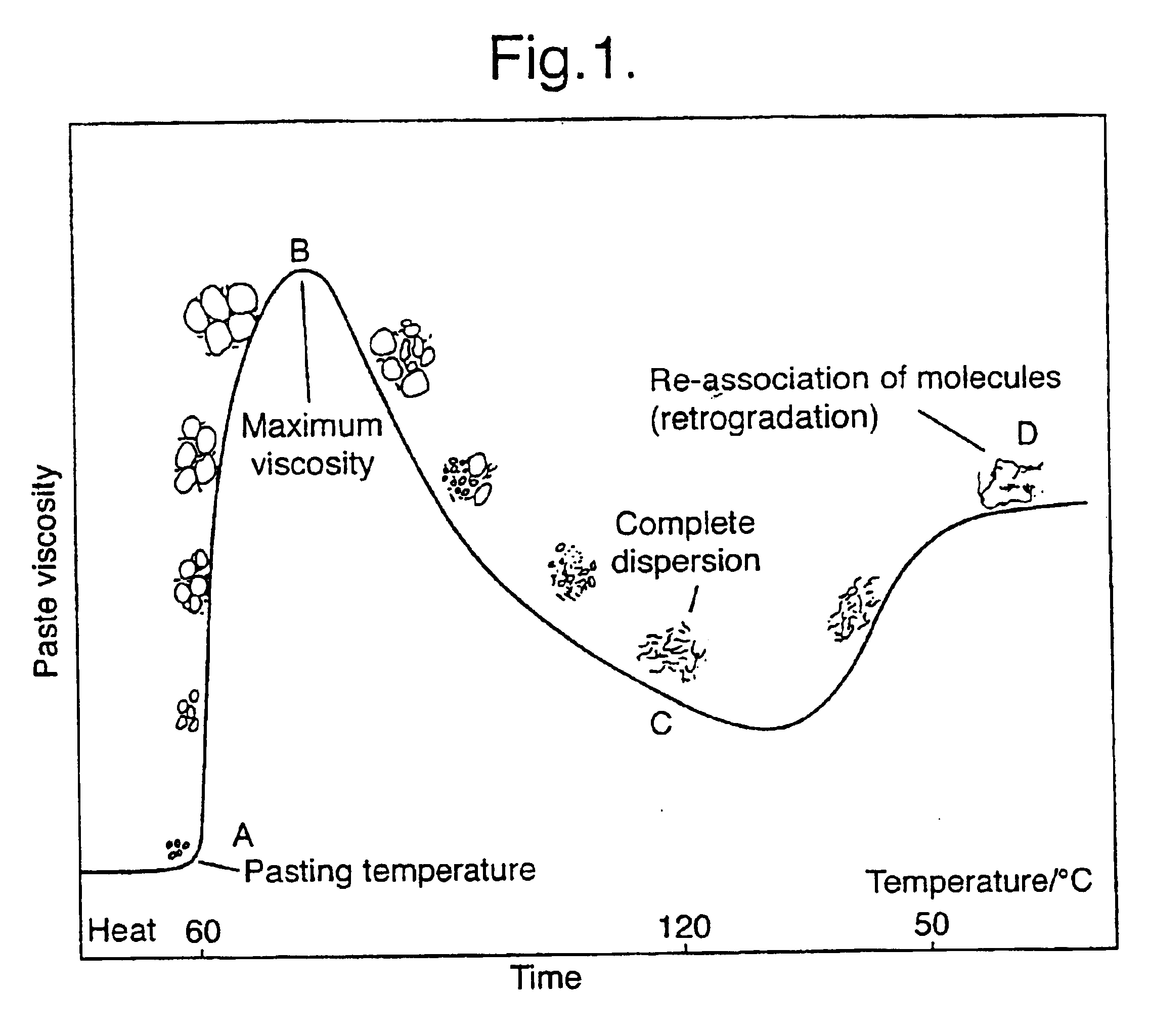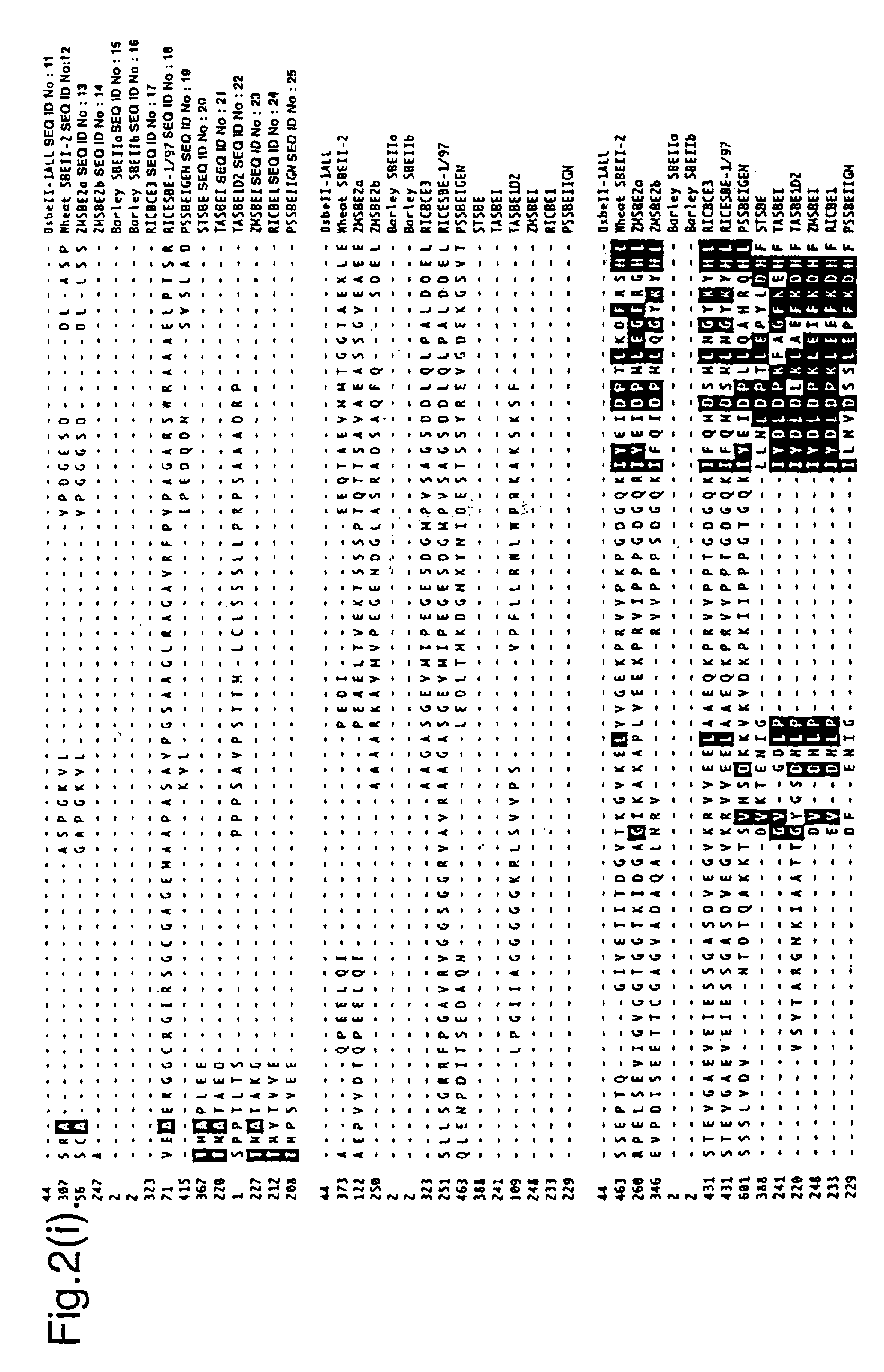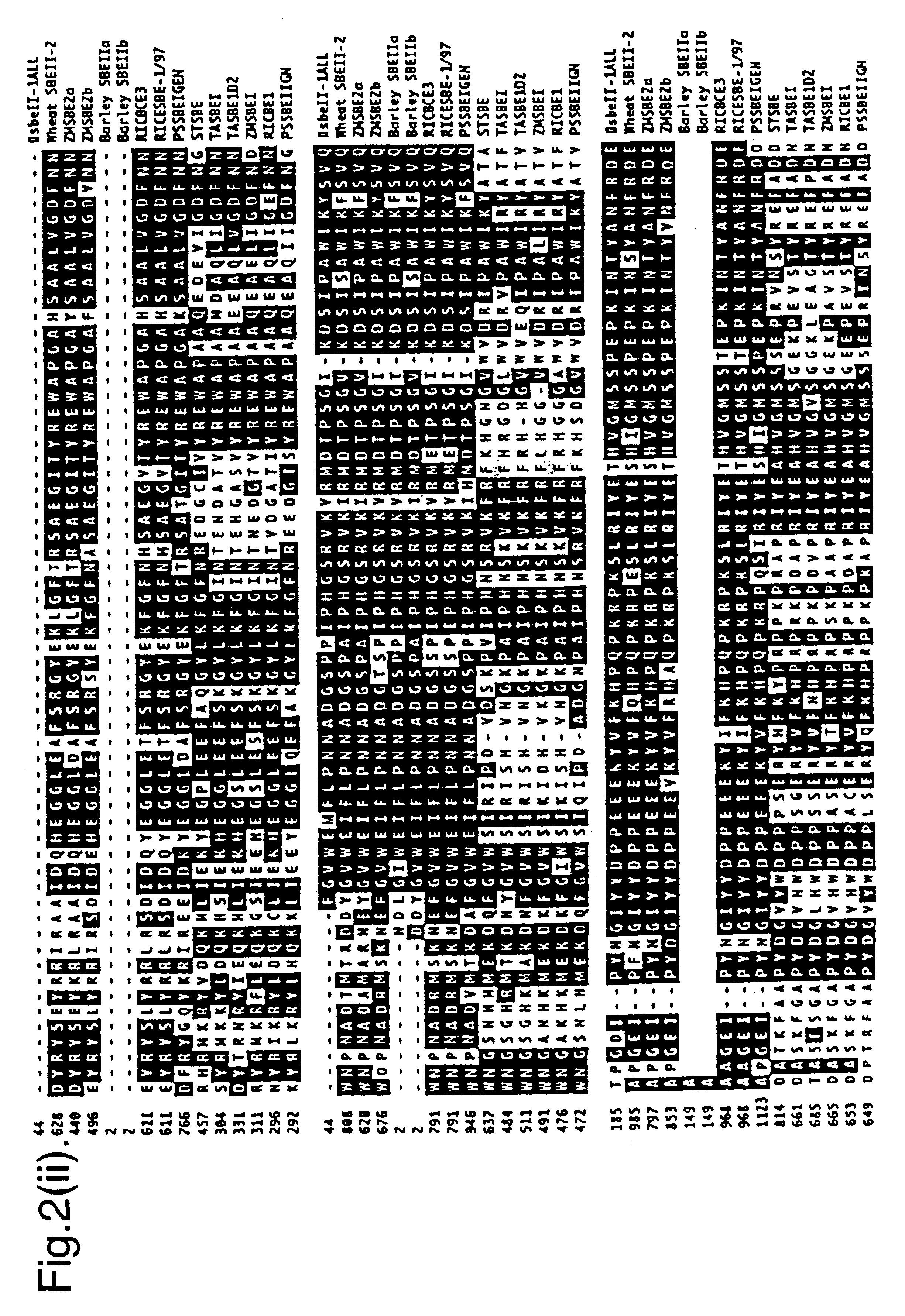Isoforms of starch branching enzyme II (SBE-IIa and SBE-IIb) from wheat
a branching enzyme and isoform technology, applied in the field of cereal science, can solve the problems of reducing viscosity, ignoring the role of starch from a breeding perspective, and a lack of natural variation between different wheat cultivars
- Summary
- Abstract
- Description
- Claims
- Application Information
AI Technical Summary
Problems solved by technology
Method used
Image
Examples
Embodiment Construction
Amplification and Characterisation of Two Classes of SBEII cDNA Clones
A PCR based cloning strategy was devised for isolating starch branching enzymes from wheat using conserved domains within the known cloned gene sequences. Starch branching enzymes have been cloned from a number of plant species and FIG. 2 shows amino acid sequence data, obtained from the European Molecular Biology Laboratory (EMBL) nucleotide database for various known starch branching enzymes as follows:
Wheat SBEII-2 for Triticum aestivum (SEQ ID No: 12)
ZM SBE2a (maize) for Zea mays (SEQ ID No: 13)
ZM SBE2b (maize) for Zea mays (SEQ ID No: 14)
Barley SBEIIa (SEQ ID No: 15)
Barley SBEIIb (SEQ ID No: 16)
RICBCE3 (rice SBEII type enzyme) for Oryza saliva (SEQ ID No: 17)
RICESBE-1 / 97 (as above, including transit peptide sequence) (SEQ ID No: 18)
PSSBEIGEN (pea SBEI, which is in fact an SBEII- type sequence) for Pisum sativum (SEQ ID No: 19)
STSBE (potato SBEI type) for Solanum tuberosum (SEQ ID No: 20)
TASBEI (wheat SBEI-2) ...
PUM
| Property | Measurement | Unit |
|---|---|---|
| gelatinisation onset temperature | aaaaa | aaaaa |
| gelatinisation onset temperature | aaaaa | aaaaa |
| gelatinisation onset temperature | aaaaa | aaaaa |
Abstract
Description
Claims
Application Information
 Login to View More
Login to View More - R&D
- Intellectual Property
- Life Sciences
- Materials
- Tech Scout
- Unparalleled Data Quality
- Higher Quality Content
- 60% Fewer Hallucinations
Browse by: Latest US Patents, China's latest patents, Technical Efficacy Thesaurus, Application Domain, Technology Topic, Popular Technical Reports.
© 2025 PatSnap. All rights reserved.Legal|Privacy policy|Modern Slavery Act Transparency Statement|Sitemap|About US| Contact US: help@patsnap.com



